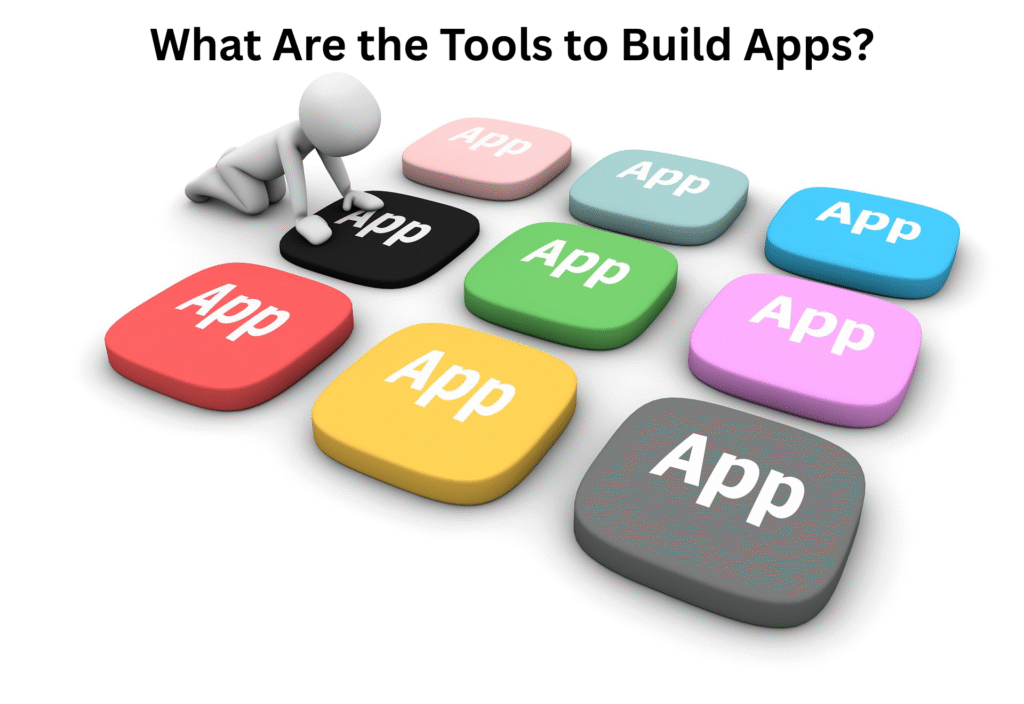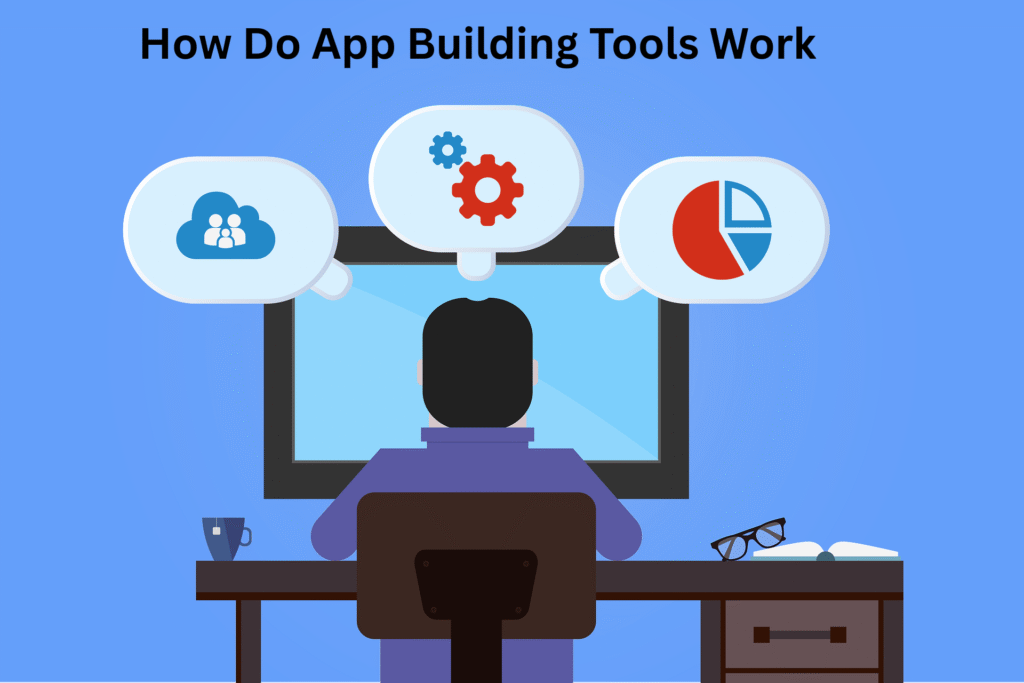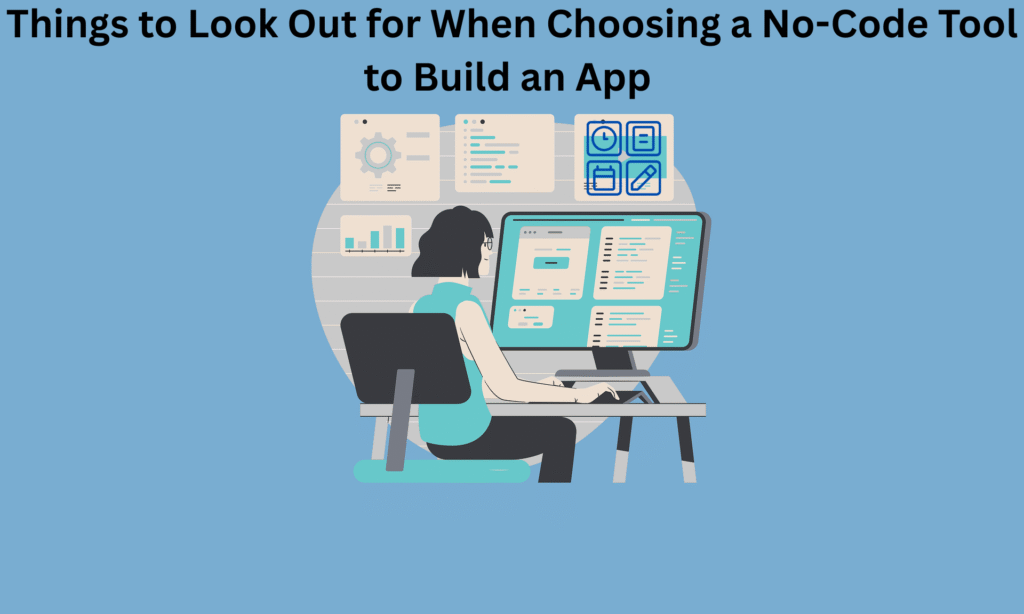It is safe to say that we’ve officially entered the age where apps rule the digital world. From online shopping and banking to fitness and entertainment, there’s an app for almost everything — and everyone uses them. As of 2025, there are over 8.9 million apps across major stores, and the average person spends more than 4 hours a day using them. With nearly 7 billion smartphone users worldwide, it’s no surprise that every business, brand, and creator now needs an app to stay relevant.
Here are some of our popular posts: Top 10 best website builders, Best super foods for a healthy lifestyle, the unlimited list of free productivity apps, Best freelance site to find remote jobs, top 10 productivity hacks for entrepreneurs , 10 best side hustles to make extra money online, best online courses for learning digital skills, top 10 best free coding website
But here’s the best part — building an app today is no longer a job reserved for coders. Gone are the days of writing endless lines of code or spending months developing a simple idea. Thanks to the rise of no-code tools to build apps, anyone can now design, launch, and scale a professional app — without touching a single line of code.
Whether you’re a startup founder, a freelancer, or a creative entrepreneur, no-code tools to build apps have made app development as easy as dragging and dropping elements on a screen. In fact, studies show that no-code platforms cut development time by up to 70% and reduce costs by more than half — empowering anyone with an idea to bring it to life.
In this post, we’ll explore the 10 best no-code tools to build apps in 2025, and how they’re transforming app creation.
What Are the Tools to Build Apps?

Tools to build apps are software platforms that allow users to create mobile or web applications without writing traditional programming code. Instead of typing lines of JavaScript or Python, these tools use visual drag-and-drop interfaces, pre-built templates, and logic blocks to design, structure, and launch apps.
They are part of a growing movement known as no-code or low-code development, which simplifies app creation and makes it accessible to non-developers. With these tools, users can build apps for e-commerce, education, healthcare, real estate, logistics, and nearly any industry.
In essence, tools for building apps give you the power to develop digital products visually, saving time and money while maintaining full creative control.
How Do App Building Tools Work?

Most no-code app builders operate on a simple principle: you describe what your app should do, and the platform provides ready-made components to bring that idea to life.
Here’s a breakdown of how these tools generally work:
#1. Data Connection: You link your app to a data source such as Google Sheets, Airtable, or a built-in database.
#2 Logic & Automation: You define how your app behaves through visual workflows (e.g., when a user clicks a button, data is sent or updated).
#3. Integration & Testing: You connect APIs, payment systems, chatbots, or analytics tools to enhance functionality.
#4. Deployment: With one click, you can publish your app to the web, App Store, or Google Play.
This process eliminates the steep learning curve associated with traditional coding, enabling creators to focus more on design, functionality, and user experience rather than syntax.
Types of Tools to Build Apps
When it comes to creating apps in 2025, you don’t need to be a tech wizard or know how to code. Thanks to modern innovation, you can now build functional, beautiful apps using simple tools to build apps that do most of the heavy lifting for you.
These platforms fall into two main categories — No-Code Tools and Low-Code Tools. Both make app creation faster and more accessible, but they serve slightly different types of users. Whether you’re a complete beginner or a developer looking for speed, understanding these two will help you choose the best fit.
#1. No-Code Tools: Let’s start with the easiest option: no-code tools. These platforms are made for people with zero programming knowledge. Everything is visual — you drag and drop elements, connect data, and set up logic using simple workflows.
No-code tools are perfect if you’re a freelancer, entrepreneur, or small business owner who wants to build an app fast without hiring a developer. Want to build an online store, booking system, or social platform? You can do it all through an intuitive interface.
The beauty of these no-code platforms is how approachable they are. You don’t need to understand code or complex databases — just your idea and a clear goal. Plus, most no-code builders in 2025 now include AI features, helping you design layouts, automate tasks, and generate workflows in seconds.
Simply put, no-code tools make app building feel more like designing a presentation than writing software.
#2. Low-Code Tools: On the other side, we have low-code tools. Think of these as a hybrid option — they still let you design visually, but they give you more control if you want to add custom logic or code snippets.
Low-code platforms are often used by companies, developers, or IT teams that want to create large, complex applications faster. They save time but don’t limit customization.
The advantage of low-code platforms is balance. You get the speed of no-code tools with the flexibility of custom development. Many developers love them because they can still use their coding skills when needed, but skip repetitive work like setting up frameworks or UI layouts.
Advantages of Using Tools to Build Apps in 2025
The year 2025 has seen an explosion in no-code and low-code development, and for good reason. These tools are reshaping the way digital products are built and launched. Here’s why they matter:
#1. Speed: You can launch an app in days instead of months.
#Cost-Effective: No need to hire large developer teams—most tools offer affordable plans for individuals and startups.
#2. Accessibility: Even beginners can create complex apps through visual builders.
#3. Scalability: Many modern tools now support enterprise-level apps that grow with your business.
#4. AI Features: New AI integrations in 2025 help users auto-generate workflows, suggest app layouts, and even write logic automatically.
Things to Look Out for When Choosing a No-Code Tool to Build an App

Choosing the right no-code tool to build an app can make or break your project. With so many platforms available in 2025—each promising speed, power, and simplicity it’s easy to get overwhelmed. The truth is, not all no-code tools are built the same. Some are perfect for mobile apps, others for web apps, and a few offer both.
To help you make the best choice, here’s a detailed look at the key things to consider when selecting from the 10 best no-code tools to build apps this year.
#1. Ease of Use and Learning Curve: One of the biggest reasons people go for no-code tools is to skip the stress of complex coding. That’s why it’s important to start by checking how easy the tool is to use. A good no-code platform should feel simple and friendly, even if you’ve never built an app before.
Look for tools that have a clean drag-and-drop editor so you can design your app visually without needing to code. It also helps if the platform provides ready-made templates, tutorials, and a supportive community that can guide you when you get stuck.
For example, Glide and Adalo are perfect for beginners because they’re easy to learn and quick to use. If you want something with more room to customize as you grow, Bubble and Webflow are great options, though they come with a slightly steeper learning curve.
At the end of the day, the best no-code tool is the one that matches your comfort level and makes app creation feel fun—not frustrating.
2. Type of App You Want to Build: Not every no-code tool is designed for the same kind of project, so it’s important to know what you’re building before picking a platform. Some tools are best for mobile apps, others for web apps, and some work perfectly for internal business tools. If your goal is to build an Android or iOS app, platforms like Adalo, Thunkable, or Bravo Studio are great choices. But if your focus is on web apps, Bubble, Softr, and Webflow will give you better flexibility. For apps that rely heavily on data, like dashboards or internal company tools, Glide and AppSheet are ideal.
Before committing to any tool, take time to define your app’s purpose. Is it a booking system, an online marketplace, a social platform, or a business dashboard? Once you’re clear on your goal, choosing the right platform becomes much easier. Picking the right one from the 10 best no-code tools to build apps will save you time, money, and effort later on.
3. Integration and Automation Capabilities: In 2025, your app needs to connect with other tools to stay useful and efficient. Whether it’s payment systems, CRMs, or AI services, integration is now a must-have feature in modern app-building. That’s why you should always check how well a no-code platform supports integrations and automations.
The 10 best no-code tools to build apps such as Bubble, Softr, and AppGyver makes this process simple. They let you connect APIs like Stripe for payments, Google Maps for location services, and OpenAI for AI-powered features. You can also automate tasks using tools like Zapier, Make, or n8n, which link your app to thousands of other services.
Good integration and automation features mean your app won’t stand alone—it will work smoothly with your entire digital ecosystem, making your workflow faster and more efficient.
4. Design Flexibility and Customization: Looks matter. The way your app looks and feels can make users love it—or leave it. Some no-code platforms limit how much you can change the design, while others give you total creative control.
If you want freedom to design every detail, tools like Webflow, Bravo Studio, and Bubble are perfect because they allow pixel-perfect layouts, animations, and branding that truly reflect your business identity. But if you want something simple and quick, Glide and Softr provide ready-made templates that look great out of the box.
The key is to balance creativity and simplicity. Choose a tool that allows you to design your app the way you imagine it, without needing to touch complex code. After all, the best of the 10 best no-code tools to build apps should empower you to bring your ideas to life visually and easily.
5. Scalability and Performance: When your app starts attracting more users, you’ll want a tool that can grow with you. Some no-code platforms work well for prototypes or small projects, but may struggle with speed or advanced features as your user base expands.
Before settling on a platform, check if it supports custom domains, allows you to upgrade as you grow, and offers reliable hosting. Also, find out if there are limits on data storage or app speed. If you’re planning for long-term growth, Bubble, AppGyver, and OutSystems are known for their scalability and performance.
A truly scalable tool helps you go from a small idea to a fully developed app without starting from scratch. That’s why scalability is one of the key things to evaluate when choosing from the 10 best no-code tools to build apps in 2025.
6. Pricing and Value for Money: Budget plays a big role in your choice of no-code tools. While most platforms offer free plans, you’ll want to look closely at what each pricing tier includes. Some charge for active users, while others bill you for published apps, storage, or integrations.
For beginners, Glide and Adalo have free options to help you get started. But if you plan to scale your app or build multiple projects, Bubble or AppGyver might give you better long-term value. Don’t just look at the price tag—consider what you get for that cost.
The best choice from the 10 best no-code tools to build apps is the one that fits your current needs while giving you room to grow without breaking your budget.
7. Support, Community, and Resources: No matter how easy a tool is, you’ll eventually need help. A strong community and reliable customer support can make all the difference. Before choosing a platform, check whether it has active user forums, regular updates, and step-by-step tutorials.
Tools like Bubble, Glide, and Softr have large online communities where users share templates, tips, and solutions. Having this kind of support not only helps you learn faster but also saves time when troubleshooting. A platform that grows with its users—and listens to their feedback—is always a good sign.
8. Security and Data Privacy: Security is something you can’t afford to overlook. In 2025, protecting user data and ensuring app security should be top priorities. When choosing a platform, make sure it provides strong security features like SSL encryption, secure login options, and GDPR compliance for data protection.
Platforms such as OutSystems, Bubble, and AppGyver take security seriously, offering enterprise-level protection. Choosing a secure platform gives you peace of mind and builds user trust—two things that are vital for your app’s success.
9. AI and Automation Features: Artificial Intelligence is transforming how no-code platforms work. Many of the 10 best no-code tools to build apps now include AI features to help you work faster and smarter. AI can help you design your app, generate workflows, or even analyze data for better decision-making.
Tools like Glide, Adalo, and Softr now include AI-assisted design suggestions and automation options that can handle repetitive tasks automatically. With AI, you can focus on creativity and strategy while the platform manages the technical details.
10. Future-Proofing and Platform Longevity: Finally, always think ahead. You don’t want to spend months building on a platform that won’t exist in a few years. Choose a tool that’s actively growing, releasing updates, and staying ahead of new technologies like AI, blockchain, and advanced integrations.
Check how active the company’s development team is and what the user community says about their long-term reliability. Platforms like Bubble, Adalo, Webflow, and OutSystems continue to evolve and adapt, making them reliable for the future.
10 best no-code tools to build apps

When selecting from the 10 best no-code tools to build apps, always go for a platform that not only meets your current needs but also has the potential to keep up with the ever-changing digital landscape. Below is our top pick of the 10 best no-code tools to build apps in 2025.
#1. Bubble – The Pioneer of No-Code App Development
Bubble remains one of the top contenders in the 10 best no-code tools to build apps for its depth, flexibility, and community support. It allows users to design, develop, and host web apps with full backend functionality. From SaaS platforms to marketplaces, Bubble lets you visually design your app and integrate advanced workflows. It supports custom plugins, API connections, and dynamic data manipulation.
Bubble’s 2025 update introduced an AI-driven assistant that helps users optimize their app logic and database structure automatically. It’s perfect for entrepreneurs aiming to scale without hiring a full dev team.
#2. Adalo – The Easiest Mobile App Builder
Adalo specializes in mobile-first app development, making it a go-to for non-technical creators who want to publish apps directly to the App Store or Google Play. With its drag-and-drop interface, users can create beautiful and responsive designs, add payments, notifications, and even custom forms.
Adalo’s new integrations in 2025 now support AI chatbots and third-party APIs, allowing mobile developers to build intelligent apps faster. Its real-time database updates make it ideal for e-commerce, booking, and fitness apps.
#3. Glide – Build Apps Directly from Google Sheets
If simplicity and speed are your top priorities, Glide is your best option. Glide converts Google Sheets or Excel files into functional mobile and web apps instantly. You can design your interface visually, automate actions, and deploy instantly—all without a backend setup.
The platform recently introduced Glide AI, allowing you to add smart recommendations and chat-like features to your apps. It’s a top choice for small businesses that want to create internal tools, directories, or client portals with minimal setup.
#4. Softr – Powerful Web Apps Built from Airtable
Softr is perfect for entrepreneurs who rely on Airtable or Google Sheets as their database. It transforms these into polished web applications in minutes. You can create member portals, client dashboards, and even SaaS products.
In 2025, Softr introduced role-based access, AI page generators, and Stripe integration, making it ideal for businesses looking to monetize their digital tools and products.
#5. Thunkable – Cross-Platform Mobile Development Made Easy
Thunkable enables creators to build Android and iOS apps simultaneously. Its block-based programming interface is beginner-friendly, and the drag-and-drop builder helps non-coders easily add logic and interactivity.
Thunkable now supports real-time collaboration and has launched integrations with OpenAI and Firebase, enabling you to create AI-powered and data-driven mobile applications without writing code.
#6. AppGyver – Enterprise-Grade No-Code Platform
AppGyver, now owned by SAP, caters to businesses that need complex and secure enterprise solutions. It provides a visual logic builder, robust backend support, and scalability options for larger teams.
AppGyver’s latest release includes AI-assisted workflow creation and SAP integration, making it a top-tier choice for corporate-level projects and digital transformation initiatives.
#7. OutSystems – Enterprise Power with Low-Code Flexibility
While technically a low-code platform, OutSystems has earned its place on this list due to its increasing accessibility for no-code users. It’s built for performance, scalability, and integration with existing business systems.
OutSystems’ AI automation now handles most backend code generation, speeding up the deployment of enterprise applications. It’s ideal for organizations that want professional-grade apps without a massive development team.
#8. AppSheet – Build Apps Directly from Your Data
Owned by Google, AppSheet turns data from Google Sheets, Excel, or SQL into interactive apps. It’s intuitive and integrates seamlessly with Google Workspace, allowing businesses to digitize workflows and data collection processes quickly.
The integration of generative AI allows users to describe app functions in plain English, and AppSheet automatically builds them. This innovation alone makes it one of the most accessible and intelligent tools available today.
#9. Webflow – Visual Design Meets Functional Web Apps
Webflow has evolved far beyond being just a web design platform. In 2025, it supports advanced CMS-driven applications, user authentication, and API integrations, all while maintaining its signature design flexibility.
It bridges the gap between designers and developers. The recent Webflow Logic feature lets users create backend workflows visually, making it ideal for marketing websites, client dashboards, and SaaS prototypes.
#10. Bravo Studio – Turning Figma Designs into Apps
Bravo Studio empowers designers by connecting directly to Figma and transforming designs into real mobile apps with functional APIs. It’s built for visual creators who want to turn design mockups into living, breathing apps without coding.
With new support for AI integrations, animations, and real-time databases, Bravo Studio is a dream come true for UI/UX designers who want to ship production-ready apps effortlessly.
Conclusion: 10 best no-code tools to build apps
Picking the right no-code tool to build an app is about finding balance—between power and simplicity, cost and capability, creativity and control.
Here are some of our popular post: Top 10 best website builders, Best super foods for a healthy lifestyle, the unlimited list of free productivity apps, Best freelance site to find remote jobs, top 10 productivity hacks for entrepreneurs , 10 best side hustles to make extra money online, best online courses for learning digital skills, top 10 best free coding website
Whichever platform you choose, remember this: the 10 best no-code tools to build apps are not just shortcuts—they’re enablers of innovation. They give you the freedom to focus on ideas, not syntax, and to bring your vision to life faster than ever before.
The 10 best no-code tools to build apps—Bubble, Adalo, Glide, Softr, Thunkable, AppGyver, OutSystems, AppSheet, Webflow, and Bravo Studio—represent the most advanced options available in 2025. Each platform empowers creators to innovate faster, reduce costs, and scale ideas into profitable ventures.


